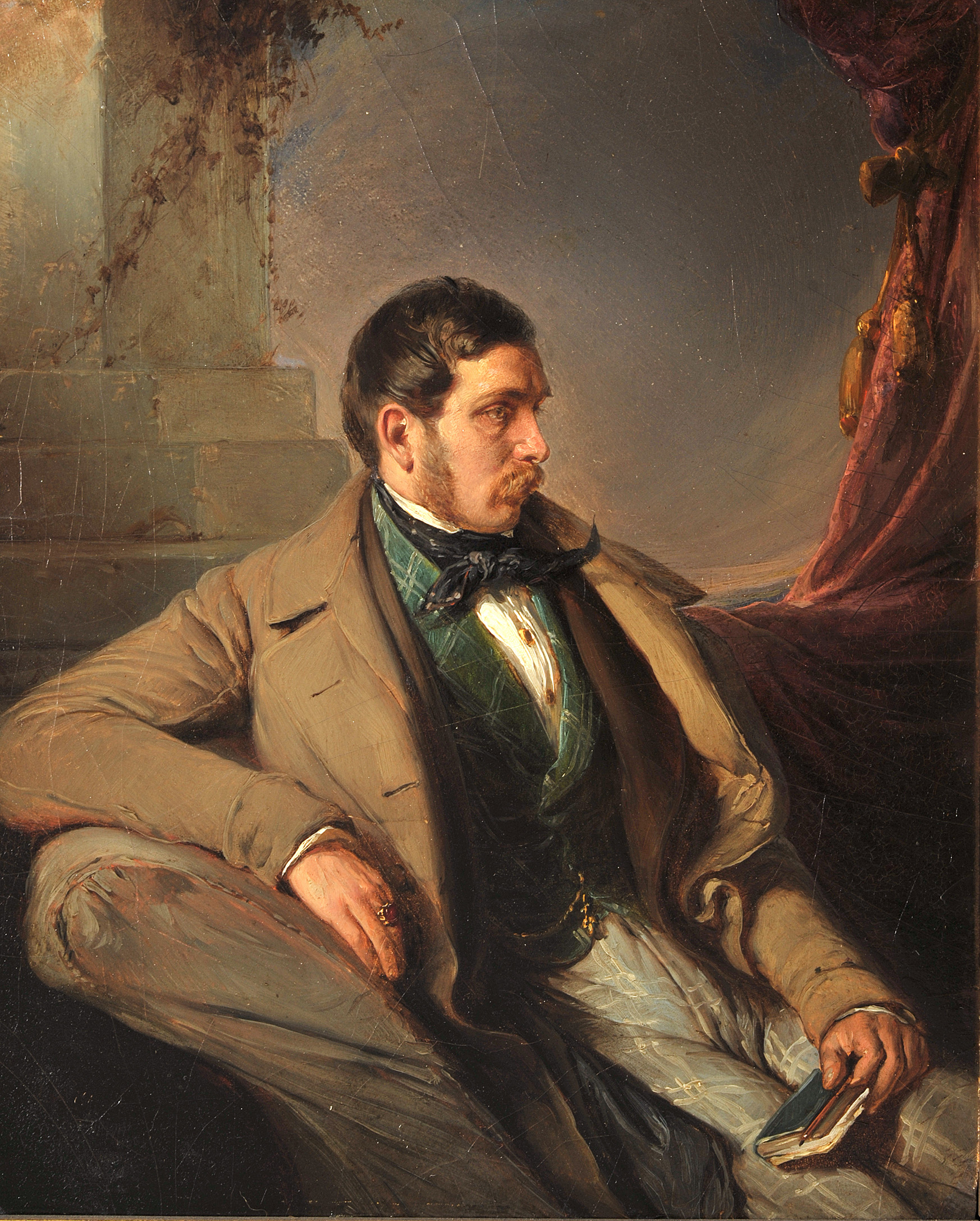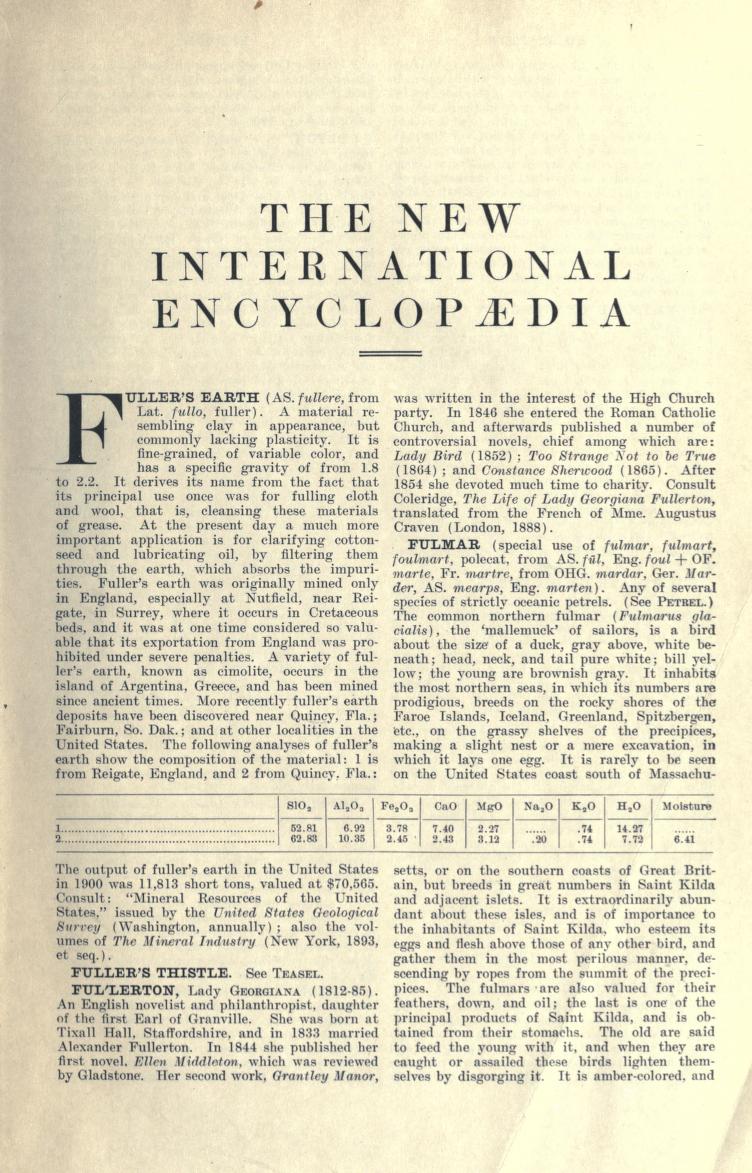|
Justinus Andreas Christian Kerner
Justinus Andreas Christian Kerner (18 September 1786, in Ludwigsburg, Baden-Württemberg, Germany – 21 February 1862, in Weinsberg, Baden-Württemberg) was a German poet, practicing physician, and medical writer. He gave the first detailed description of botulism. Life He was born at Ludwigsburg in Duchy of Württemberg, Württemberg. After attending the classical schools of Ludwigsburg and Maulbronn, he was apprenticed in a cloth factory, but, in 1804, owing to the good services of Professor Karl Philipp Conz, was able to enter the University of Tübingen. He studied medicine but also had time for literary pursuits in the company of Ludwig Uhland, Gustav Schwab and others. He took his doctor's degree in 1808, spent some time travelling, and then settled as a practising physician in Wildbad. Here he completed his ''Reiseschatten von dem Schattenspieler Luchs'' (1811), in which his own experiences are described with caustic humour. He next collaborated with Uhland and Schwab i ... [...More Info...] [...Related Items...] OR: [Wikipedia] [Google] [Baidu] |
Justinus Kerner Altersbild
*
{{disambiguation, given name ...
Justinus (Latin: Justinus or Iustinus) may refer to: People known by the name alone *Justinus van Nassau (1559–1631), son of William of Orange ("the Silent") *Justin Martyr (also "Iustinus", 100–165), Christian martyr *Justin (historian) (Marcus Junianius (or Junianus) Justinus), a Latin historian who lived under the Roman Empire People with the given name *Justinus Kerner (1786–1862), German poet *Justinus Darmojuwono (1914–1994), Indonesian cardinal *Justinus van der Brugghen (1804–1863), Dutch politician *Sebald Justinus Brugmans (1763–1819), Dutch botanist See also *Justin (other) Justin may refer to: People * Justin (name), including a list of persons with the given name Justin * Justin (historian), a Latin historian who lived under the Roman Empire * Justin I (c. 450–527), or ''Flavius Iustinius Augustus'', Eastern Rom ... [...More Info...] [...Related Items...] OR: [Wikipedia] [Google] [Baidu] |
Nikolaus Lenau
Nikolaus Lenau was the pen name of Nikolaus Franz Niembsch Edler von Strehlenau (13 August 1802 – 22 August 1850), a German-language Austrian poet. Biography He was born at Csatád (Schadat), Kingdom of Hungary, now Lenauheim, Banat, then part of the Habsburg monarchy, now in Romania. His father, a Habsburg government official, died in 1807 in Budapest, leaving his children in the care of their mother, who remarried in 1811. In 1819 Nikolaus went to the University of Vienna; he subsequently studied Hungarian law at Pozsony (Bratislava) and then spent the next four years qualifying himself in medicine. Unable to settle down to any profession, he began writing verse. The disposition to sentimental melancholy inherited from his mother, stimulated by disappointments in love and by the prevailing fashion of the romantic school of poetry, descended into gloom after his mother's death in 1829. Soon afterwards, however, a legacy from his grandmother enabled him to devote himself wh ... [...More Info...] [...Related Items...] OR: [Wikipedia] [Google] [Baidu] |
William Cullen Bryant
William Cullen Bryant (November 3, 1794 – June 12, 1878) was an American romantic poet, journalist, and long-time editor of the ''New York Evening Post''. Born in Massachusetts, he started his career as a lawyer but showed an interest in poetry early in his life. He soon relocated to New York and took up work as an editor at various newspapers. He became one of the most significant poets in early literary America and has been grouped among the fireside poets for his accessible, popular poetry. Biography Youth and education Bryant was born on November 3, 1794, in a log cabin near Cummington, Massachusetts; the home of his birth is today marked with a plaque. He was the second son of Peter Bryant (b. Aug. 12, 1767, d. Mar. 20, 1820), a doctor and later a state legislator, and Sarah Snell (b. Dec. 4, 1768, d. May 6, 1847). The genealogy of his mother traces back to passengers on the ''Mayflower'': John Alden (b. 1599, d. 1687), his wife Priscilla Mullins and her parents William an ... [...More Info...] [...Related Items...] OR: [Wikipedia] [Google] [Baidu] |
Encyclopedia Americana
''Encyclopedia Americana'' is a general encyclopedia written in American English. It was the first major multivolume encyclopedia that was published in the United States. With ''Collier's Encyclopedia'' and ''Encyclopædia Britannica, Encyclopedia Americana'' became one of the three major English-language general encyclopedias'':'' The three were sometimes collectively called "the ABCs". Following the acquisition of Grolier in 2000, the encyclopedia has been produced by Scholastic. The encyclopedia has more than 45,000 articles, most of them more than 500 words and many running to considerable length (the "United States" article is over 300,000 words). ''Americana'' is international in scope and is known for its detailed coverage of American and Canadian geography and history. ''Americana'' is also known for its strong coverage of biographies, and scientific and technical subjects. Written by 6,500 contributors, the ''Encyclopedia Americana'' includes over 9,000 bibliographie ... [...More Info...] [...Related Items...] OR: [Wikipedia] [Google] [Baidu] |
New International Encyclopedia
''The New International Encyclopedia'' was an American encyclopedia first published in 1902 by Dodd, Mead and Company. It descended from the ''International Cyclopaedia'' (1884) and was updated in 1906, 1914 and 1926. History ''The New International Encyclopedia'' was the successor of the ''International Cyclopaedia'' (1884). Initially, ''The International Cyclopaedia'' was largely a reprint of Alden's ''Library of Universal Knowledge'', which was a reprint of the British ''Chambers's Encyclopaedia''. The title was changed to ''The New International Encyclopedia'' in 1902, with editors Harry Thurston Peck, Daniel Coit Gilman, and Frank Moore Colby. The encyclopedia was popular and reprints were made in 1904, 1905, 1907 (corrected and expanded to 20 volumes), 1909 and 1911. The 2nd edition appeared from 1914 to 1917 in 24 volumes. With Peck and Gilman deceased, Colby was joined by a new editor, Talcott Williams. This edition was set up from new type and thoroughly revised. It ... [...More Info...] [...Related Items...] OR: [Wikipedia] [Google] [Baidu] |
1911 Encyclopædia Britannica
A notable ongoing event was the Comparison of the Amundsen and Scott Expeditions, race for the South Pole. Events January * January 1 – A decade after federation, the Northern Territory and the Australian Capital Territory are added to the Commonwealth of Australia. * January 3 ** 1911 Kebin earthquake: An earthquake of 7.7 Moment magnitude scale, moment magnitude strikes near Almaty in Russian Turkestan, killing 450 or more people. ** Siege of Sidney Street in London: Two Latvian people, Latvian anarchists die, after a seven-hour siege against a combined police and military force. Home Secretary Winston Churchill arrives to oversee events. * January 5 – Egypt's Zamalek SC is founded as a general sports and Association football club by Belgian lawyer George Merzbach as Qasr El Nile Club. * January 14 – Roald Amundsen's South Pole expedition makes landfall, on the eastern edge of the Ross Ice Shelf. * January 18 – Eugene B. El ... [...More Info...] [...Related Items...] OR: [Wikipedia] [Google] [Baidu] |
Millennialism
Millennialism (from millennium, Latin for "a thousand years") or chiliasm (from the Greek equivalent) is a belief advanced by some religious denominations that a Golden Age or Paradise will occur on Earth prior to the final judgment and future eternal state of the "World to Come". Christianity and Judaism have both produced messianic movements which featured millennialist teachings—such as the notion that an earthly kingdom of God was at hand. These millenarian movements often led to considerable social unrest. Similarities to millennialism appear in Zoroastrianism, which identified successive thousand-year periods, each of which will end in a cataclysm of heresy and destruction, until the final destruction of evil and of the spirit of evil by a triumphant king of peace at the end of the final millennial age. "Then Saoshyant makes the creatures again pure, and the resurrection and future existence occur" (''Zand-i Vohuman Yasht 3:62''). Scholars have also linked various oth ... [...More Info...] [...Related Items...] OR: [Wikipedia] [Google] [Baidu] |
Harmony Society
The Harmony Society was a Christian theosophy and pietist society founded in Iptingen, Germany, in . Due to religious persecution by the Lutheran Church and the government in Württemberg, the group moved to the United States,Robert Paul Sutton, ''Communal Utopias and the American Experience: Religious Communities'' (Westport, CT: Praeger, 2004) p. 38. where representatives initially purchased land in Butler County, Pennsylvania. On February 15, 1805, the group of approximately 400 followers formally organized the Harmony Society, placing all their goods in common. Under its founder and spiritual leader, Johann Georg Rapp (1757–1847); Frederick (Reichert) Rapp (1775–1834), his adopted son who managed its business affairs; and their associates, the Society existed for one hundred years, roughly from 1805 until 1905. Members were known as Harmonists, Harmonites, or Rappites. The Society is best known for its worldly successes, most notably the establishment of three model c ... [...More Info...] [...Related Items...] OR: [Wikipedia] [Google] [Baidu] |
George Rapp
John George Rapp (german: Johann Georg Rapp; November 1, 1757 in Iptingen, Duchy of Württemberg – August 7, 1847 in Economy, Pennsylvania) was the founder of the religious sect called Harmonists, Harmonites, Rappites, or the Harmony Society. Born in Iptingen, Duchy of Württemberg, Germany, Rapp became inspired by the philosophies of Jakob Böhme, Philipp Jakob Spener, and Emanuel Swedenborg, among others. In the 1780s, George Rapp began preaching and soon started to gather a group of his own followers. His group officially split with the Lutheran Church in 1785 and was promptly banned from meeting. The persecution that Rapp and his followers experienced caused them to leave Germany and come to the United States in 1803.Robert Paul Sutton, ''Communal Utopias and the American Experience: Religious Communities'' (2003) p. 38 Rapp was a Pietist, and a number of his beliefs were shared by the Anabaptists, as well as groups such as the Shakers. Rapp's religious beliefs and p ... [...More Info...] [...Related Items...] OR: [Wikipedia] [Google] [Baidu] |
Sebacic Acid
Sebacic acid is a naturally occurring dicarboxylic acid with the chemical formula . It is a white flake or powdered solid. ''Sebaceus'' is Latin for tallow candle, ''sebum'' is Latin for tallow, and refers to its use in the manufacture of candles. Sebacic acid is a derivative of castor oil. In the industrial setting, sebacic acid and its homologues such as azelaic acid can be used as a monomer for nylon 610, plasticizers, lubricants, hydraulic fluids, cosmetics, candles, etc. Production Sebacic acid is produced from castor oil by cleavage of ricinoleic acid, which is obtained from castor oil. Octanol & glycerin is a byproduct. It can also be obtained from decalin via the tertiary hydroperoxide, which gives cyclodecenone, a precursor to sebacic acid. Potential medical significance Sebum is a secretion by skin sebaceous glands. It is a waxy set of lipids composed of triglycerides (≈41%), wax esters (≈26%), squalene (≈12%), and free fatty acids (≈16%). Included in the fr ... [...More Info...] [...Related Items...] OR: [Wikipedia] [Google] [Baidu] |
Animal Magnetism
Animal magnetism, also known as mesmerism, was a protoscientific theory developed by German doctor Franz Mesmer in the 18th century in relation to what he claimed to be an invisible natural force (''Lebensmagnetismus'') possessed by all living things, including humans, animals, and vegetables. He claimed that the force could have physical effects, including healing. He tried persistently, without success, to achieve a wider scientific recognition of his ideas.Wolfart, Karl Christian; Friedrich Anton Mesmer. ''Mesmerismus: Oder, System der Wechselwirkungen, Theorie und Anwendung des thierischen Magnetismus als die allgemeine Heilkunde zur Erhaltung des Menschen'' (in German, facsimile of the 1811 edition). Cambridge University Press, 2011. . Foreword. The vitalist theory attracted numerous followers in Europe and the United States and was popular into the 19th century. Practitioners were often known as magnetizers rather than mesmerists. It had an important influence in medici ... [...More Info...] [...Related Items...] OR: [Wikipedia] [Google] [Baidu] |




